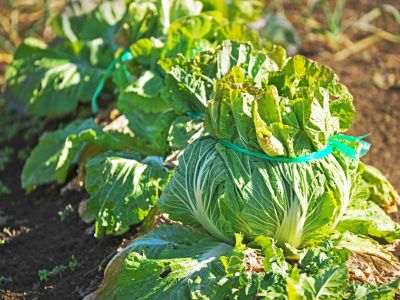Cabbage Head Tying
Easy to grow, provided cool temperatures abound, cabbages are nonetheless havens for a variety of pests such as:
Cabbage loopers Slugs Imported cabbage worms Cabbage root maggots Aphids Flea beetles
To avoid the ravage that accompanies their presence, it’s important to keep the garden clean of debris that fosters pest infestation. Some people use panty hose to tie up cabbage heads to deter cabbage moths from laying their eggs, which in turn become pesky cabbage worms. While this will probably work – I have not personally tried it – do you have to tie up cabbage heads? Is there another reason, beyond pest determent, in tying cabbage plant leaves?
Do You Have to Tie Up Cabbage?
No, there is no need for cabbage head tying. The cabbage will undoubtedly grow into a head without any interference from you. That being said, there are some varieties that can benefit from the tying up of cabbage leaves. Chinese cabbage, or Napa cabbage, is often tied up to engender a tighter head with whiter and tenderer leaves. This is sometimes referred to as “blanching.”
How to Tie Up Cabbage Heads
Use soft twine or other soft material to tie the cabbage heads and prevent damaging the outer leaves. Tie the cabbage head when it is almost mature and has a firm feel to it with large, loose outer foliage. Hold the inner leaves together with one hand while you tuck the outer leaves around the head. Then wrap the cabbage around the middle with the soft twine, creating a dense head. Tie the binding with a loose knot that can be easily opened when you harvest the cabbage head. Again, it is not strictly necessary to tie cabbage heads, but you may find doing so creates tighter, unblemished heads and in the process, deters the slugs and snails…or at least keeps them from eating the tender most inner leaves.
